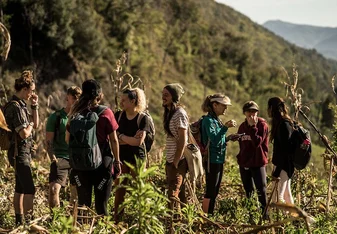2 travelers are looking at this program
About Program
The Tiger Temple was founded in 1994 as a forest monastery and sanctuary for numerous wild animals. In 1995, the temple received the Golden Jubilee Buddha Image, made of 80kg in gold. In 1999 the temple received the first tiger cub; it had been found by villagers and died soon after. Several tiger cubs were later given to the temple, typically when the mothers had been killed by poachers. As of 2007, over 21 cubs had been born at the temple, and the total number of tigers was about 12 adult tigers and 4 cubs. As of late March 2011, the total number of tigers living at the temple has risen to almost 90. The hands on approach of the Monks results in happy tigers and a successful breeding programme.








